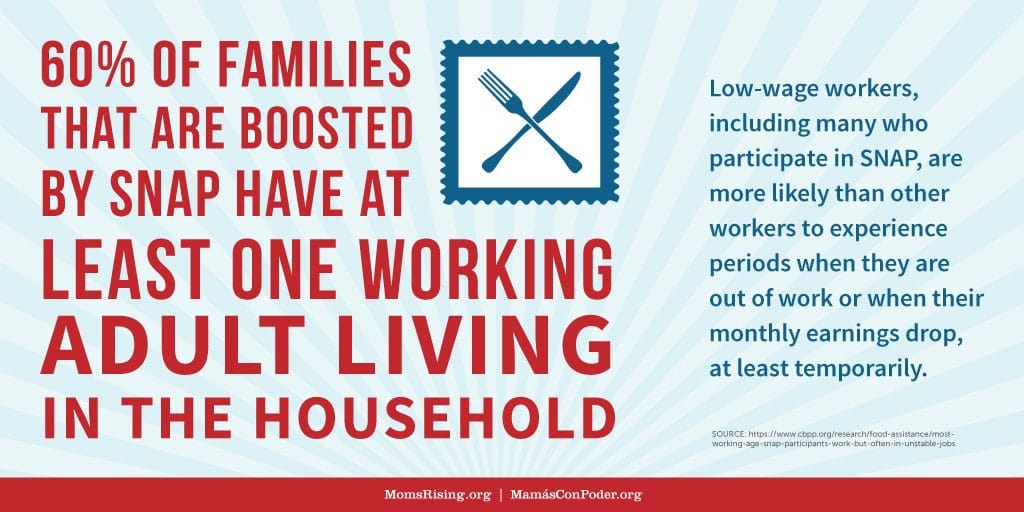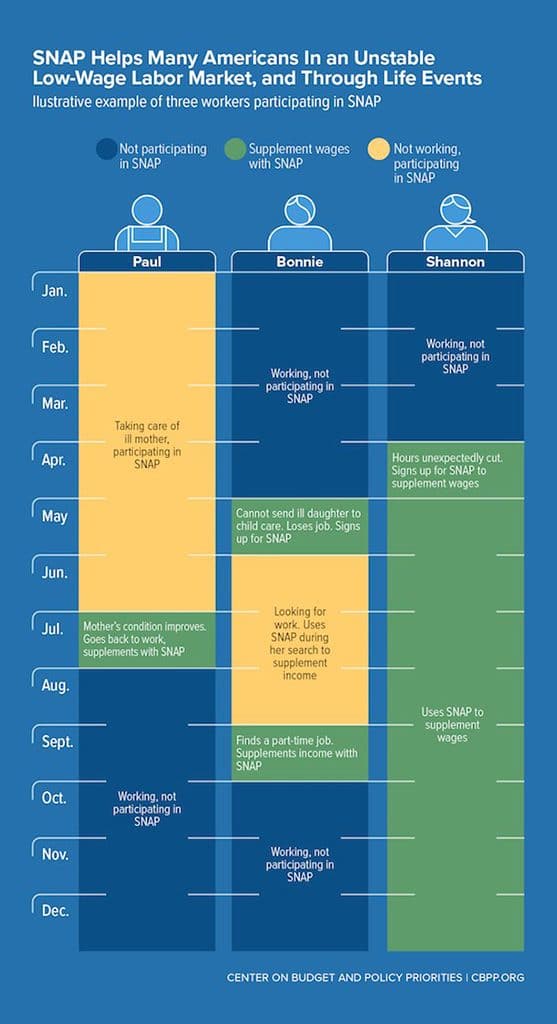The U.S. Farm Bill is a comprehensive piece of legislation that was created during the Great Depression and now sets policy on U.S. agriculture and food supply. Among the programs it authorizes is the Supplemental Nutrition Assistance Program (SNAP/food stamps) our nation’s flagship anti-hunger program, serving over 40 million Americans.
Congress must reauthorize the Farm Bill every five years. The current Farm Bill expires on September 30, 2018.
The U.S. House of Representatives is now considering a proposed Farm Bill (H.R. 2) that the House Agriculture Committee passed out of committee on a party-line vote on April 12. This version is deeply and dangerously flawed. It erodes SNAP’s ability to assist families who are struggling to put food on the table.
Roughly 1 in 8 of our Allegheny County neighbors have trouble affording food on a regular basis, and SNAP helps those families. The vast majority of SNAP recipients are children, elderly, working adults, and people with disabilities.
Yet, according to the Food Research Action Center (FRAC), the proposals in H.R. 2 would lead to greater hunger and poverty among all types of beneficiary families, including the working poor, as well as reduced economic growth and productivity in communities across the country.
- Under this bill, large numbers of working families with children would no longer receive SNAP, there would be a much harsher “cliff effect” in the program, and, in turn, children would be denied access to other essential anti-hunger programs, such as school breakfast and lunch, putting their health and learning at risk.
- Many low-income households, including those that receive SNAP, are often forced to choose between paying heating bills or buying food. The bill slashes the amount of benefits for SNAP households struggling to pay for both utilities and food — to “heat and eat.”
- The bill also seeks to expand dramatically the number of people subject to harsh SNAP eligibility cutoffs by adding unemployed and underemployed parents with older children and adults up to age 60. Currently, time limits apply to able-bodied adults age 18–50 without dependents, many of whom are between jobs or do not have steady enough work to meet the 20-hour per week minimum, often for reasons outside of their control. Others face significant barriers to work, such as lack of job opportunities and lack of transportation to get to the few available jobs.”
Meanwhile, the Senate is drafting its version of the Farm Bill. Defeating the House version’s SNAP cuts will strongly influence the Senate version and will strengthen our hand when it comes to similar fights over Medicaid and other social programs.
HOW YOU CAN TAKE ACTION
The House Farm Bill’s rigid work rules will reduce or eliminate SNAP for millions. It will deny food to children, veterans, women, and people needing treatment and/or with disabilities.
The vote on this bill will likely come the week of May 14.
![]() Call Your House Rep. to Protect Food Assistance
Call Your House Rep. to Protect Food Assistance
Find your representative, then call and urge them to vote “No” on H.R. 2, the House Farm Bill. You can also speak out on social media by using #HandsOffSNAP.
![]() Organizational Sign-on Letter to Oppose H.R. 2
Organizational Sign-on Letter to Oppose H.R. 2
Add your organization to this list of groups and leaders opposed to the House Agriculture Committee Farm Bill. There are more than 350 signers so far, representing 45 states plus DC and Puerto Rico.
Every representative will have to vote on the bill, so it’s important they all hear from their constituents. Tell them they must reject this version of the Farm Bill. Ask them to recommit to working on a bipartisan bill that protects, not punishes, hungry Americans.
ADDITIONAL RESOURCES
The Benefits of Nutrition Assistance for African American Maternal and Infant Health – Center for American Progress
Cutting Food Assistance is a Bad Deal for Women and Families – Food Research Action Center
House Farm Bill Briefs – Who Would Its SNAP Proposals Harm? – Center on Budget and Policy Priorities
Most Working-Age SNAP Participants Work, But Often in Unstable Jobs – Center on Budget and Policy Priorities






They just increased defense spending a couple of months ago, now they want to make up the deficit by starving the masses of people that are unemployed or at unsteady jobs. They want them to work at jobs that don’t exist.
Snap like any other government program is widely abused!
Nope. Though that is certainly what many politicians want you to believe — that way they can seem justified in cutting those programs and perpetuating the myth that the majority of people receiving assistance are undeserving schemers. But there is no basis to that allegation.
The U.S. Department of Agriculture (USDA), which oversees SNAP, takes food stamp fraud seriously. It reports that the SNAP trafficking rate – people who sell food stamps for cash – has fallen significantly, from about 4 cents on the dollar in 1993 to about 1 cent in 2006-08 (last data available). Furthermore, money lost to SNAP waste and abuse is a drop in the bucket compared to the $125 billion the U.S. Department of Defense is wasting — a department that’s never even been audited.
Get the Truth About Food Stamps